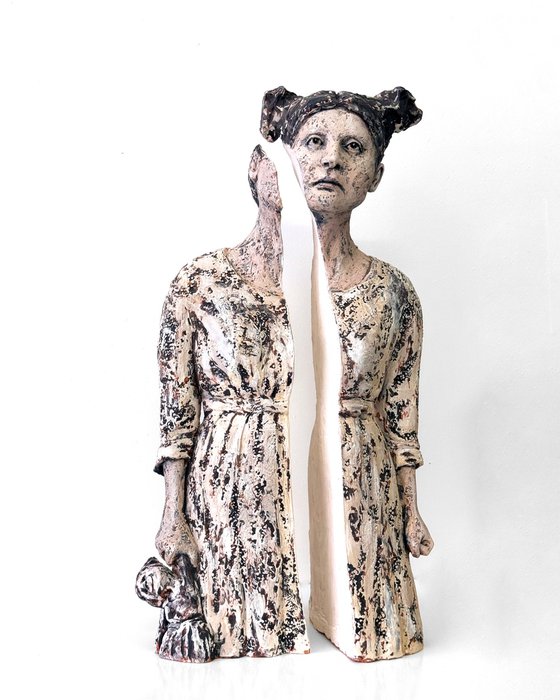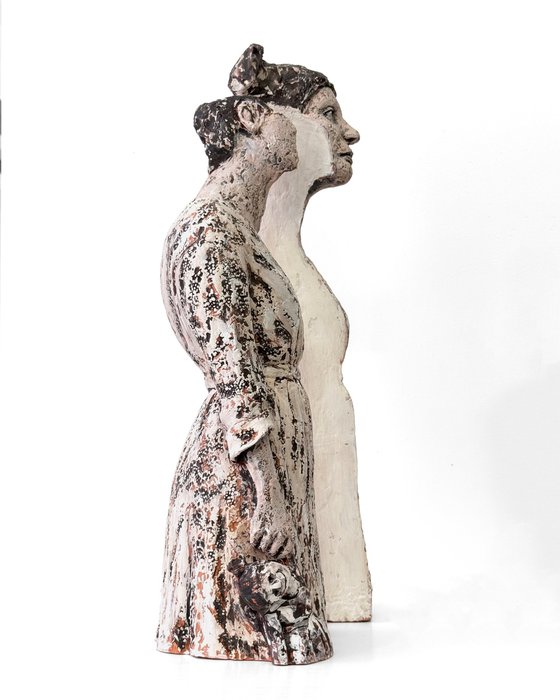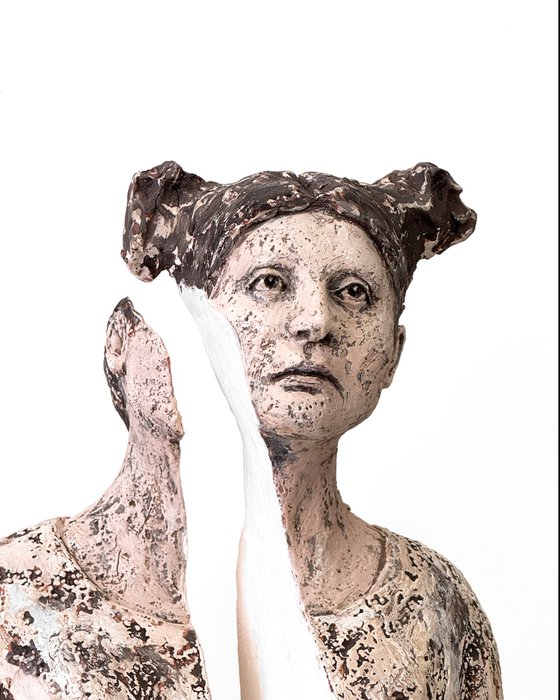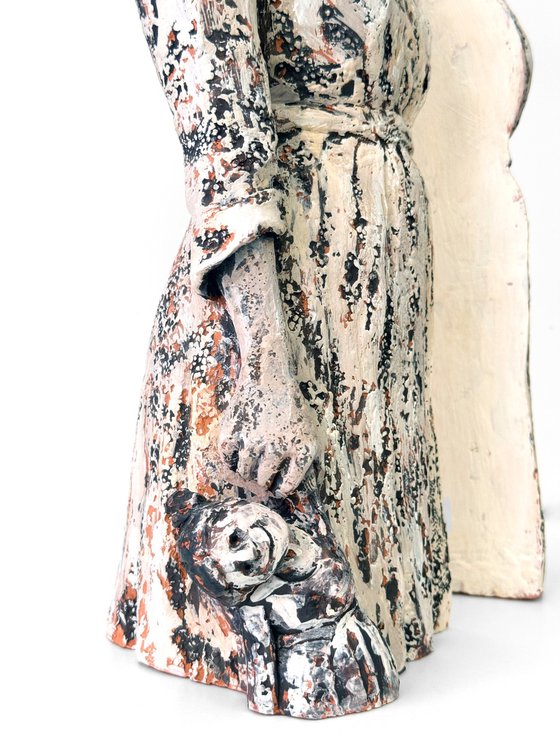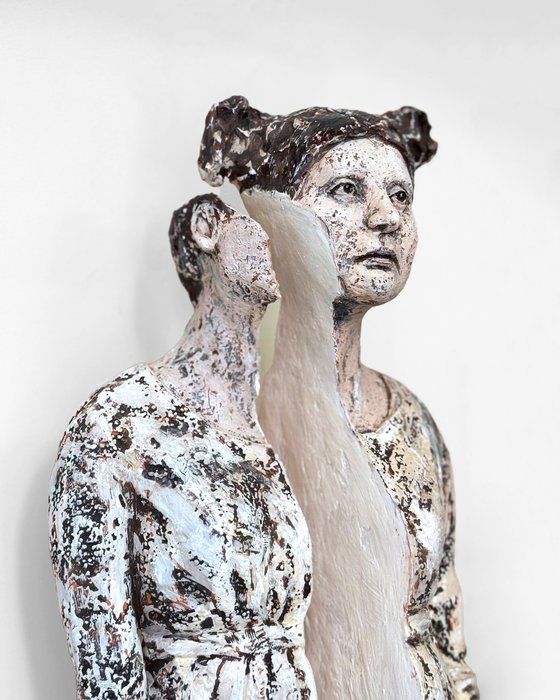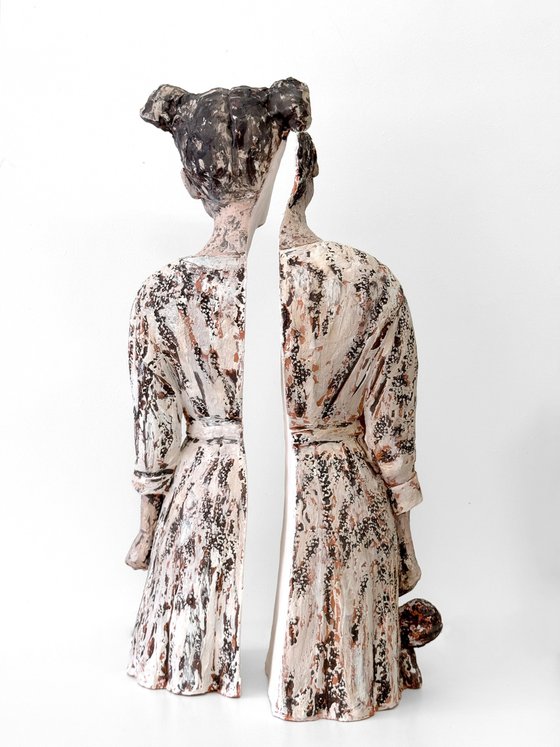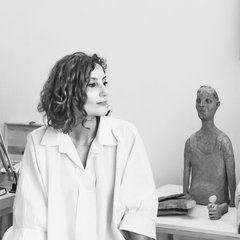Main Navigation
Original artwork description:
The sculpture depicts a female figure vertically divided into two halves, embodying the contrast and continuity between past and present.
The left side represents childhood, marked by war and sorrow. In this half, the face is missing—hidden—as if symbolizing an identity erased or never fully formed. The only expressive element is a fragile hand clutching a doll, a sign of a broken childhood, a desperate hold on something familiar in a chaotic world.
The right side represents the present. Here, the face is visible: mature, marked, but alive. The open eyes reveal awareness and memory. The arm on this side ends in a clenched fist, a symbol of strength, restrained anger, resilience, and perhaps still-lingering pain. The fist is a natural continuation of the hand that once held the doll— the same gesture transformed over time, showing that the past has not vanished but has rooted itself in the present identity.
As a whole, the sculpture conveys the message that memory is living matter: what we have lived through shapes us, conditions us, and walks with us. The past, even when hidden or unspoken, defines how we see the world, how we protect ourselves, and how we respond. The division is not a rupture, but a continuum—two inseparable halves forming a single existence.
Materials used:
clay, ingobe
Tags:
#woman #contemporary #artfinder #ceramic #original art #figurative sculpture #life story #artcollector #small mediumFeatured by our Editors:
CONTINUES (2023) Clay sculpture
by Sol Vil
2 Artist Reviews
£1,310.25
- Clay sculpture on Other
- One of a kind artwork
- Size: 24 x 42 x 20cm
- Signed on the back
- Style: Expressive and gestural
- Subject: People and portraits
Loading
Original artwork description
The sculpture depicts a female figure vertically divided into two halves, embodying the contrast and continuity between past and present.
The left side represents childhood, marked by war and sorrow. In this half, the face is missing—hidden—as if symbolizing an identity erased or never fully formed. The only expressive element is a fragile hand clutching a doll, a sign of a broken childhood, a desperate hold on something familiar in a chaotic world.
The right side represents the present. Here, the face is visible: mature, marked, but alive. The open eyes reveal awareness and memory. The arm on this side ends in a clenched fist, a symbol of strength, restrained anger, resilience, and perhaps still-lingering pain. The fist is a natural continuation of the hand that once held the doll— the same gesture transformed over time, showing that the past has not vanished but has rooted itself in the present identity.
As a whole, the sculpture conveys the message that memory is living matter: what we have lived through shapes us, conditions us, and walks with us. The past, even when hidden or unspoken, defines how we see the world, how we protect ourselves, and how we respond. The division is not a rupture, but a continuum—two inseparable halves forming a single existence.
Materials used:
clay, ingobe
Tags:
#woman #contemporary #artfinder #ceramic #original art #figurative sculpture #life story #artcollector #small mediumFeatured by our Editors:
14 day money back guaranteeLearn more
